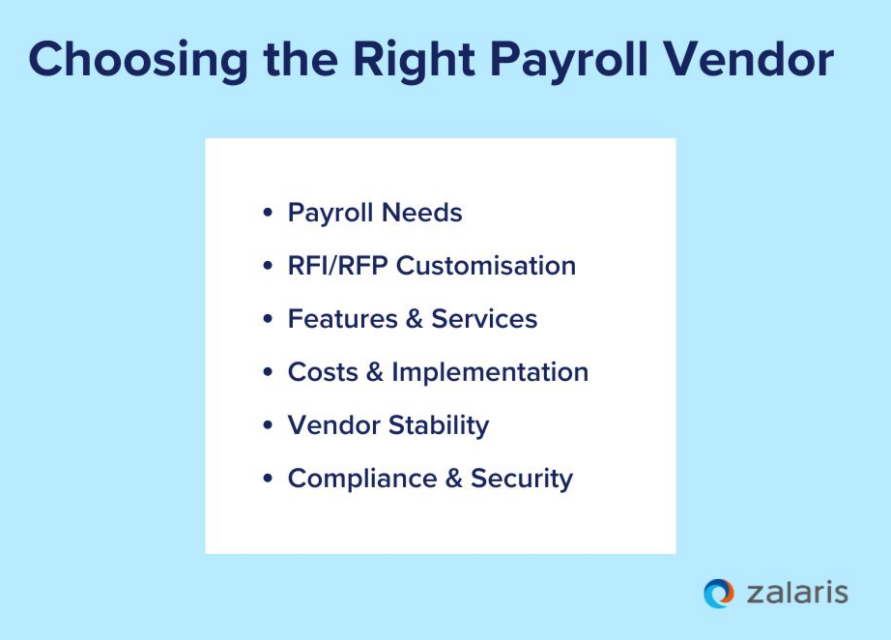Payroll management directly impacts employee satisfaction and legal compliance, so choosing a reliable partner is essential. With many vendors offering similar services, the selection process can feel overwhelming. To simplify this, we’ve created a Payroll RFI/RFP Template designed to guide you through every step of the selection process, ensuring you collect all the vital information needed to make an informed decision.
What is an RFP in payroll and HR?
An RFP (Request for Proposal) in HR is a formal document used when soliciting bids from vendors. It outlines the organisation’s specific requirements for services such as payroll, benefits administration, or HR technology, allowing vendors to provide detailed proposals. RFPs are typically used when a project is complex or requires technical information for a thorough evaluation of potential partners.
When should you use an RFP?
An RFP should be used when a project demands in-depth technical and service details. It allows you to compare multiple vendors based on key aspects like pricing, service capabilities, compliance, and scalability. Typically, the RFP stage follows an RFI (Request for Information), which helps shortlist vendors based on general capabilities. Once you’ve done your initial research, the RFP is your next step to gather formal bids.
Know more on the topic
Key factors to consider when choosing a payroll vendor

1. Understand Your Payroll Needs: Start by assessing your organisation’s payroll requirements, including any gaps in your current process. Consider future scalability and key features such as tax compliance, reporting, and integration with existing HR systems.
2. Customise your RFI/RFP: Tailor your RFI and RFP documents to gather relevant information. The RFI is used to create a shortlist of vendors based on general capabilities, while the RFP focuses on specific needs, including payroll processing, time tracking, and support services.
3. Evaluate features and services: When reviewing vendor proposals, prioritise features such as mobile access, compliance support, and customer service. It’s essential to choose a payroll partner that can grow with your organisation and meet evolving regulatory requirements.
4. Assess costs and implementation: An RFP allows you to compare detailed pricing, including hidden fees or customisation costs. Request timelines for implementation and support to ensure smooth onboarding without delays.
5. Vendor stability and references: Choose a financially stable payroll partner with a strong track record. Request client references to evaluate vendor reliability, system performance, and customer service.
6. Compliance and security: Payroll data security is crucial. Ensure that your chosen vendor complies with relevant regulations and employs robust security measures, such as encryption and regular audits.
What’s included in the Payroll RFI/RFP Template?
The Payroll RFI/RFP Template is designed to help organisations evaluate payroll outsourcing partners by highlighting the strategic differences between providers. Using Excel to manage vendor responses from the RFI/RFP stages can simplify data organisation. With customisable fields, it’s easy to track and compare vendor responses based on essential criteria such as cost, features, and service reliability.
It includes a variety of questions organised by the following topics:
1. General information
This section covers essential background details on the vendor, including:
- The company’s registered name, areas of operation, and global presence.
- Strategic vision, key differentiators, and payroll service strengths.
- Revenue data, industry experience, and client references from similar projects.
- How they manage payroll service transfers and post-go-live support.
2. Operations
Focus on the vendor’s internal processes, governance, and compliance:
- Code of Conduct, audit procedures, and quality control measures.
- Compliance with local and international payroll laws, especially for multi-country operations.
- Certifications like ISO9001 and their process for managing legal changes.
- Approach to managing security vulnerabilities.
3. Information security and data protection
Security is a top priority, especially for payroll data. Key questions in this category include:
- Security protocols for data handling and encryption for data transfers.
- Disaster recovery and business continuity plans.
- Physical access restrictions, audit logs, and compliance with global privacy regulations like GDPR.
4. Functional scope and technical requirements
This section evaluates the technical capabilities of the payroll system:
- System architecture and payroll technology used.
- Integration with HR systems, including time and attendance.
- Customisation options, real-time access, and payslip delivery methods.
- Authentication processes and language support.
5. Sustainability
In today’s business environment, sustainability is a crucial factor. Evaluate the vendor’s:
- Sustainability certifications and policies.
- Commitment to environmental and social responsibility.
6. Commercials
The final section of the RFP focuses on the commercial aspects, such as:
- Pricing models, including transparency on hidden fees.
- Service upgrades, post-implementation support, and contract terms.
One important note: Our template is structured to include one field per question and answer, avoiding the use of merged cells. This ensures vendors can provide responses easily, minimising complications during the evaluation process.
Download your RFI/RFP Payroll Template
Selecting the right payroll outsourcing partner can be a complex task, but using our Payroll RFI/RFP Template simplifies the process. By covering key areas such as general information, operational practices, security, technical capabilities, sustainability, and pricing, you can confidently choose a partner that meets your organisation’s unique payroll needs.
Ready to get started? Download our customisable Payroll RFI/RFP Template today to streamline your selection process and find the ideal payroll outsourcing partner for your business.

